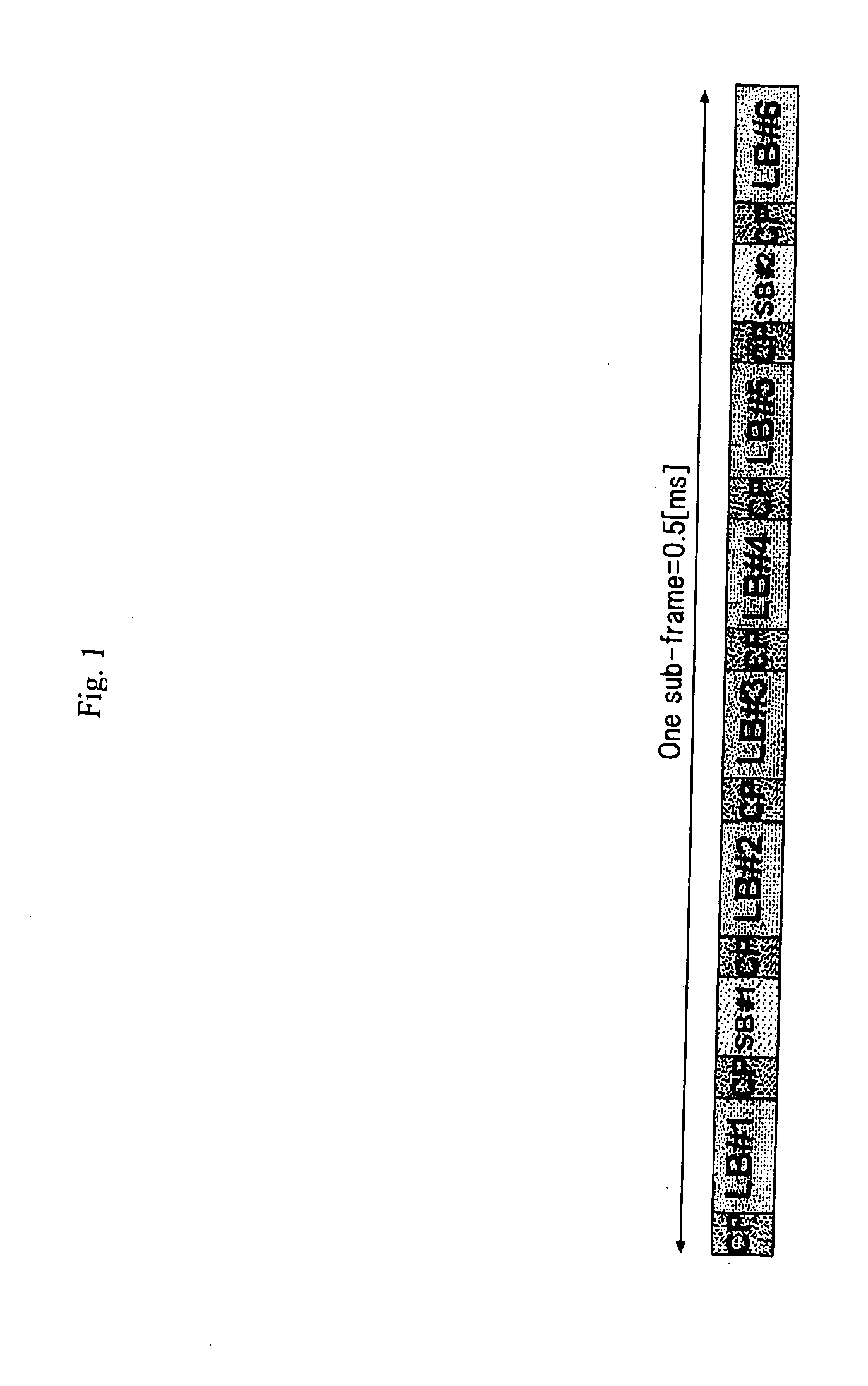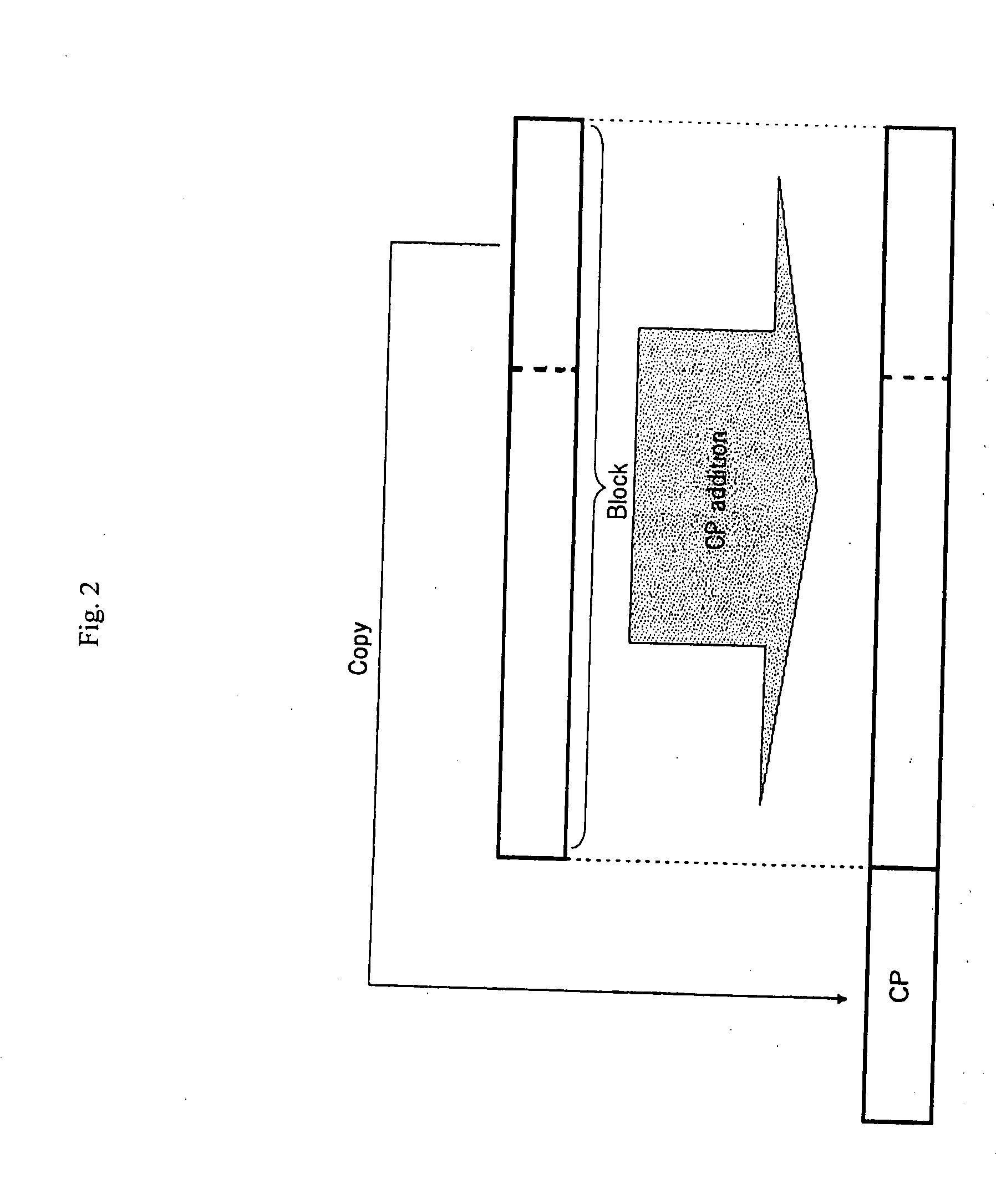Band allocation method and radio communication system
a radio communication system and band allocation technology, applied in the field of band allocation method and radio communication system, can solve problems such as inability to fully examine, and achieve the effect of reducing interference of pilot signals between cells
- Summary
- Abstract
- Description
- Claims
- Application Information
AI Technical Summary
Benefits of technology
Problems solved by technology
Method used
Image
Examples
first embodiment
[0038]FIG. 3 is a block diagram showing a mobile communication system according to a first embodiment of the invention. Referring to FIG. 3, the mobile communication system of the first embodiment has a division pattern sever 10 and a plurality of base stations 11, 12. Base stations 11, 12 are connected to division pattern server 10. Base station 11 constructs a cell 13, and base station 12 constructs cell 14. Mobile stations 15 to 17 exist within cell 13, and mobile stations 18 to 20 exist within cell 14.
[0039] In this embodiment, a service area is configured on a cell basis, but the cell may be further divided into sectors. In this case, the cell may be reread as the sector in the description of this embodiment. Though division pattern server 10 exists separately from base stations 11, 12 in this embodiment, the function of division pattern server 10 may be incorporated into any base station for integration.
[0040] Division pattern server 10 receives a desired division pattern no...
second embodiment
[0091] In a second embodiment, one example of the FDM pilot multiplexing is shown. The system configuration and the frame format in the second embodiment are the same as shown in the first embodiment.
[0092]FIG. 12 is a view showing one example of predetermined division patterns in the second embodiment. In the second embodiment, it is assumed that two division patterns are determined beforehand in one example as shown in FIG. 12.
[0093] In division pattern #1, the system band of 10 MHz is equally divided into two bands #1 and #2 of 5 MHz. Further, each of bands #1 and #2 is divided into four groups like comb teeth. This is denoted as RPF (Repetition Factor)=4.
[0094] In division pattern #2, the system band of 10 MHz is divided into three bands #1, #2 and #3. Band #1 is 5 MHz and bands #2 and #3 are 2.5 MHz. Further, each of bands #1, #2 and #3 is divided into four groups like comb teeth with RPF=4, like pattern #1.
[0095] At the time of starting the operation of the base station, d...
third embodiment
[0101] In a third embodiment, another example of the FDM pilot multiplexing is shown. The system configuration and the frame format in the third embodiment are the same as shown in the first embodiment.
[0102]FIG. 13 is a view showing one example of predetermined division pattern in the third embodiment. In the third embodiment, it is assumed that one division pattern is determined beforehand in one example as shown in FIG. 13. Division pattern #1 is stored in each of base stations 11, 12.
[0103] In division pattern #1 of FIG. 13, the system band of 10 MHz has frequency divided like comb teeth with RPF=2. And comb tooth 1 spreads over the entire band of 10 MHz. Comb teeth 2, 3 spread over the band of 5 MHz. Comb tooth 2 spreads over band #1 of 5 MHz, and comb tooth 3 spreads over band #2 of 5 MHz.
[0104] At the time of starting the operation, each of base stations 11, 12 allocates the frequency to each mobile station, using the division pattern #1. For example, in a certain sub-fram...
PUM
 Login to View More
Login to View More Abstract
Description
Claims
Application Information
 Login to View More
Login to View More - R&D
- Intellectual Property
- Life Sciences
- Materials
- Tech Scout
- Unparalleled Data Quality
- Higher Quality Content
- 60% Fewer Hallucinations
Browse by: Latest US Patents, China's latest patents, Technical Efficacy Thesaurus, Application Domain, Technology Topic, Popular Technical Reports.
© 2025 PatSnap. All rights reserved.Legal|Privacy policy|Modern Slavery Act Transparency Statement|Sitemap|About US| Contact US: help@patsnap.com



